
Hello there!
I have some very interesting pals and I wanted to share a bit about them with you. If you have more fascinating facts that you would like to contribute, please email them my way.
Best,
Joey
PS: This page is set at a reading level for age 13+.

BEAR
(Click here for pronunciation)
A baby bear is called a cub. There are eight species of bears; three of which live in North American. How many can you name? My friend Wendy will sometimes sees black bears strolling down her street and in her local forests.

BEAVER
(Click here for pronunciation)
The beaver is the national animal of Canada. Their sharp teeth help them cut down trees to make their homes which creates dams. Their flat tails and webbed back feet help them swim in the water.

ECHIDNA
(Click here for pronunciation)
The echidna evolved over 20 million years ago and is one of the few mammals that lays eggs! This type of mammal is called a “monotreme.” Echidnas have spikey quills on their body, so they look a bit like a porcupine. They are distant relatives of the platypus. They use their long snouts to find and gobble up worms, ants, and termites, but they don’t have any teeth! A baby echidna is called a “puggle.” It hatches from an egg in its mother’s pouch, and once it grows up, it spends its time digging, swimming, and climbing trees.
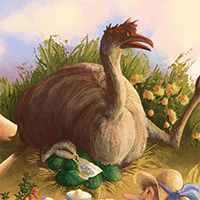
EMU
(Click here for pronunciation)
Due to its tiny wings, this bird cannot fly, but thanks to its long legs, the emu can run 50 kilometers in one hour. Its long legs and tall neck make the emu the second tallest bird in the world. Can you guess which bird is the tallest bird in the world? Usually, the male emu sits on the eggs. He does not eat or drink for about eight weeks while keeping the eggs warm. The emu egg is so large that one egg can make an omelette to feed at least four people! Use the picture in the book to figure out the unusual color of emu eggs.
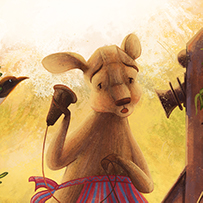
KANGAROO
(Click here for pronunciation)
Kangaroos are the largest of the marsupials (mammals that have pouches). Their only natural habitat is Australia. Baby kangaroos, more affectionately called joeys, are born incompletely developed. When they are born, they are the size of a grape, have no ears or back legs, and are blind. They will stay in their mother’s pouch for the first six months as they continue to develop. There can be two joeys in the pouch at once—one tiny and one fully developed.
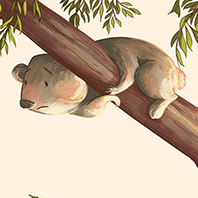
KOALA
(Click here for pronunciation)
The koalas are the laziest of Joey’s pals because they are often sleeping! Koalas sleep up to 20 hours daily, staying safe in a tree, to digest their food. They eat eucalyptus leaves. Their hands and feet curl so they can hang on tightly to trees! Did you know koala mothers also have a pouch, but their pouches face downward? Newborn koalas are as small as a jellybean and can’t see or hear. They climb from the birth canal into their mother’s pouch to continue growing, and then climb onto their mother’s back.
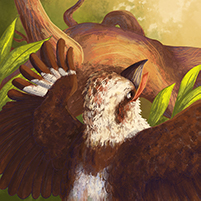
KOOKABURRA
(Click here for pronunciation)
You might think this bird is the silliest of Joey’s friends because it is always laughing, but that’s just its bird song! Kookaburras live in Australia and use their laughing sound to tell other kookaburras where their family’s territory is. The family is made up of a mated pair and their grown-up babies who help them sit on eggs, find food, and protect the territory (until they are about 4 years old). Kookaburras eat insects, worms, mice and even snakes. Sometimes kookaburras catch snakes and then kill them by clunking the snake’s head on something hard!
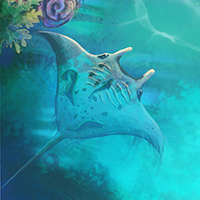
MANTA RAY
(Click here for pronunciation)
The largest of the manta rays can have a wingspan over 7 meters, which is about the height of a two-story house. The graceful way it swims through the water looks like a bird flying.
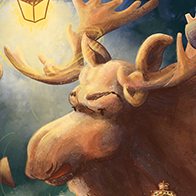
MOOSE
(Click here for pronunciation)
Male moose can have antlers that weigh 30 kilograms! Just like cattle, a male moose is called a bull, a female moose is called a cow and a young one is called a calf. Most moose are found in North America.
Do you know the plural of moose? It is not like the plural of goose!
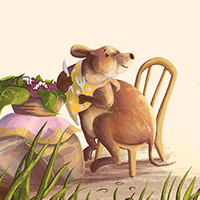
QUOKKA
(Click here for pronunciation)
The babies of these marsupials are also called joeys! Quokkas sleep during the day, which means they are nocturnal. They are also herbivores, which means they eat plants. They mostly munch on grass and leaves and can even climb short trees for a snack. Like cows, they chew their cud. These animals are not fearful of people and look like they are smiling, so they are known as very friendly animals. Quokkas are native to a small area of Australia, where they live in small groups or alone.

RABBIT
(Click here for pronunciation)
Perhaps you have a pet rabbit. Rabbits are known for many things but especially having many young ones. A rabbit couple can have over 50 offspring in one year!
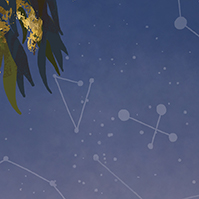
SOUTHERN CROSS (also called Crux Constellation)
(Click here for pronunciation)
In the Southern Hemisphere, the Southern Cross Constellation (group of stars) can be used to calculate due south. Historically, these four bright stars were such an important navigational tool that this constellation is on Australia’s national flag. In fact, five countries in the Southern Hemisphere have the Southern Cross on their flags. Can you find the Southern Cross in the book?
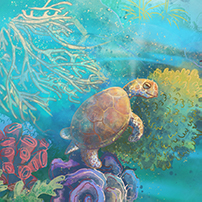
TURTLE
(Click here for pronunciation)
Some turtles can live to be 100 years old. The females return to the beach they where born to mate and lay their eggs. Conversely, many male turtles will never return to the beach they were born at. Scientists claim that turtles have been on earth for hundreds of millions of years.
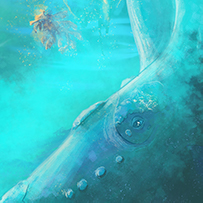
WHALE
(Click here for pronunciation)
There are about 90 different species of whales. Whales, kangaroos and humans are mammals. The one Mamma Kangaroo visited is a Southern Right Whale. The Blue Whale is the largest animal on the earth and some weigh more than the heaviest dinosaur. Impressively, compared to humans, they barely use the world’s resources and don’t pollute. They help to provide a significant amount of the oxygen you breathe. According to the International Monetary Fund, “one whale is worth thousands of trees.”
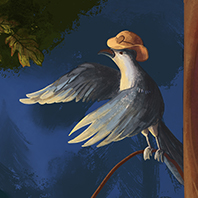
WHISKY JACK/CANADA JAY
(Click here for pronunciation)
The Whisky Jack name comes from the Algonquin name for these friendly birds, namely “Wiskedjak.” They have a mutually beneficial relationship with moose because the Jay eats the parasites off the moose’s back. They are not “bird brains” but rather have amazing memories. Currently, there is a movement in Canada to make this bird its national bird. Click here for a great article from Canadian Geographic about this bird.

A very special thank you to my friends Jessie, Aurora, Walter, Calvin, Pina and Vera for their contributions to this page.

